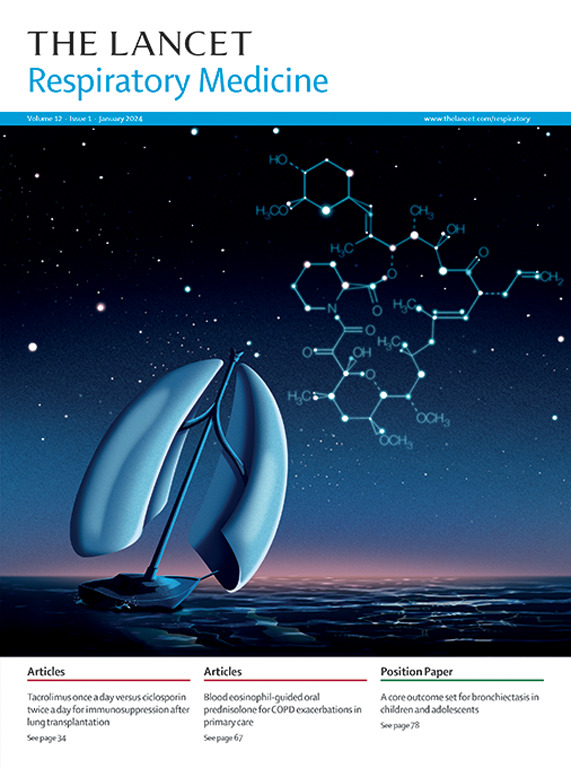定义和亚表型ARDS:来自国际德尔菲专家小组的见解
IF 38.7
1区 医学
Q1 CRITICAL CARE MEDICINE
引用次数: 0
摘要
尽管急性呼吸窘迫综合征(ARDS)的定义经历了多次修订,旨在提高其诊断准确性和临床实用性,但这些定义的有用性和准确性仍然是正在进行讨论的问题。在这篇立场文件中,我们报告了一项德尔菲研究,以就ARDS的概念模型达成共识,特别是在临床、研究和教育背景下确定其定义成分,并探索亚表型的潜在作用。我们进行了四轮德尔菲研究,涉及来自不同地理经济区域和专业背景的ARDS研究和管理专家。对ARDS概念模型达成共识;在研究、教育和患者管理方面纳入ARDS定义的关键组成部分;以及进一步研究ARDS亚表型的必要性。此外,我们强调了知识差距和研究重点,可以指导该领域的未来调查。我们的研究建立在以前的非德尔菲共识过程(例如,新的全球ARDS定义和最近的基于社会的指南)的基础上,通过使用严格的德尔菲方法来确保小组成员的匿名性,并使用明确的定量标准来减轻潜在的同伴压力和群体一致性。研究结果强调需要完善ARDS定义,以更好地解释临床表现和潜在病理生理的异质性,并提高诊断精度,包括在适当的情况下使用亚表型。本文章由计算机程序翻译,如有差异,请以英文原文为准。
Defining and subphenotyping ARDS: insights from an international Delphi expert panel
Although the definition of acute respiratory distress syndrome (ARDS) has undergone numerous revisions aimed at enhancing its diagnostic accuracy and clinical practicality, the usefulness and precision of these definitions remain matters of ongoing discussion. In this Position Paper, we report on a Delphi study to reach a consensus on the conceptual model of ARDS, specifically identifying its defining components within clinical, research, and educational contexts as well as exploring the potential role of subphenotyping. We did a four-round Delphi study, involving experts in ARDS research and management from a diverse range of geoeconomic regions and professional backgrounds. Consensus was achieved for the conceptual model of ARDS; key components to be included for an ARDS definition in the context of research, education, and patient management; and the need for further research in subphenotyping ARDS. Additionally, we highlight knowledge gaps and research priorities that could guide future investigations in this area. Our study builds on previous non-Delphi-based consensus processes (eg, the new global definition of ARDS and recent society-based guidelines) by using a rigorous Delphi method that ensured panellist anonymity and used clear quantitative criteria to mitigate potential peer pressure and group conformity. The findings underscore the need to refine the ARDS definition to better account for the heterogeneity of clinical presentations and underlying pathophysiology, and to improve diagnostic precision, including the use of subphenotyping where appropriate.
求助全文
通过发布文献求助,成功后即可免费获取论文全文。
去求助
来源期刊

Lancet Respiratory Medicine
RESPIRATORY SYSTEM-RESPIRATORY SYSTEM
CiteScore
87.10
自引率
0.70%
发文量
572
期刊介绍:
The Lancet Respiratory Medicine is a renowned journal specializing in respiratory medicine and critical care. Our publication features original research that aims to advocate for change or shed light on clinical practices in the field. Additionally, we provide informative reviews on various topics related to respiratory medicine and critical care, ensuring a comprehensive coverage of the subject.
The journal covers a wide range of topics including but not limited to asthma, acute respiratory distress syndrome (ARDS), chronic obstructive pulmonary disease (COPD), tobacco control, intensive care medicine, lung cancer, cystic fibrosis, pneumonia, sarcoidosis, sepsis, mesothelioma, sleep medicine, thoracic and reconstructive surgery, tuberculosis, palliative medicine, influenza, pulmonary hypertension, pulmonary vascular disease, and respiratory infections. By encompassing such a broad spectrum of subjects, we strive to address the diverse needs and interests of our readership.
 求助内容:
求助内容: 应助结果提醒方式:
应助结果提醒方式:


